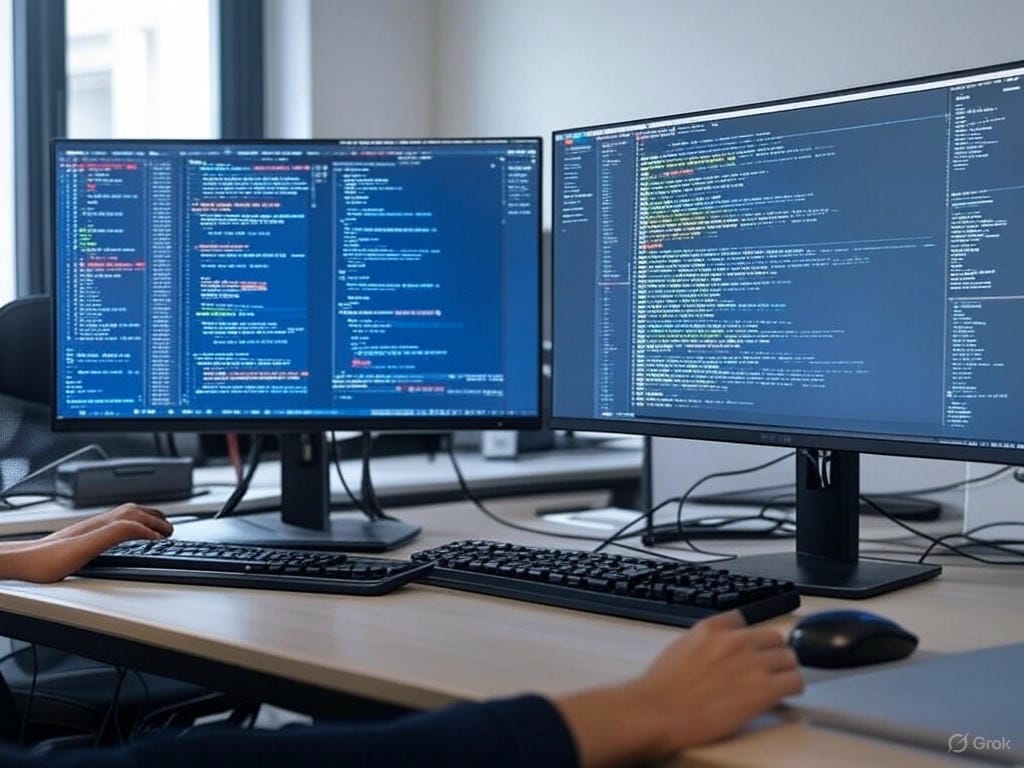Mastering Collaborative Coding: The Power of Pair Programming and Teamwork in Software Development
Collaborative coding, often exemplified through practices like pair programming, is a transformative approach that aspiring software developers can leverage to enhance their skills. As part of my journey in a coding apprenticeship, I have actively engaged in pair programming during in-class workshops and while working on a capstone project with a partner. This hands-on experience has not only sharpened my technical abilities but also taught me invaluable lessons in teamwork and communication, which are critical in the tech industry.
The Essence of Pair Programming: Communication and Collaboration
At its core, pair programming involves two developers working together at a single workstation to accomplish a task. One takes on the role of the ‘driver,’ who writes the code, while the other acts as the ‘navigator,’ reviewing each line, suggesting improvements, and thinking strategically about the direction of the project. This dynamic duo approach underscores the importance of effective communication. Being able to articulate ideas clearly and concisely ensures that both parties remain aligned, reducing misunderstandings and fostering a productive coding environment.
Moreover, pair programming has taught me the significance of seeking help when needed. There’s no shame in asking questions or requesting clarification—my coding partners have always been eager to assist, turning potential roadblocks into learning opportunities. This collaborative spirit not only accelerates problem-solving but also facilitates knowledge sharing, allowing each participant to learn from the other’s strengths and insights.
Building Skills for the Professional World
For early-career software engineers, pair programming serves as a practical introduction to the team-based coding environments common in professional settings. Most software development projects in the industry are collaborative efforts, requiring developers to work closely with others. Engaging in pair programming provides a glimpse into this reality, helping individuals hone both their technical expertise and soft skills, such as adaptability, patience, and interpersonal communication.
Beyond pair programming, other collaborative methods like mob programming—where a larger group works together on a single task—can amplify learning. As highlighted in various developer communities, mob programming exposes participants to diverse perspectives, offering fresh approaches to problem-solving that one might not encounter working solo. This multiplicity of viewpoints can be incredibly enriching, broadening one’s understanding of code and innovative techniques.
Leveraging Modern Tools for Remote Collaboration
With the evolution of technology, collaborative coding has transcended physical boundaries thanks to advanced code collaboration tools. Real-time online editors and platforms like Visual Studio Code’s Live Share enable developers to work together seamlessly, regardless of location. These tools have significantly improved over recent years, offering features like real-time code sharing, integrated chat, and AI-powered insights that transform raw data into actionable intelligence. Such advancements ensure that teams can maintain productivity and cohesion even when working remotely, eliminating the need for multiple tools and reducing context-switching.
Maximizing the Benefits of Collaborative Coding
To extract the most value from collaborative coding experiences, intentionality is key. Setting specific goals for each session can enhance learning outcomes. For instance, one session could focus on improving communication skills by actively asking questions and explaining thought processes. Another session might challenge participants to experiment with a new programming language or framework, pushing the boundaries of their comfort zone. Alternating between the driver and navigator roles also ensures a well-rounded experience, as each position offers unique learning opportunities.
Additionally, engaging with the broader developer community through platforms that host coding katas or discussions on best practices can further enrich one’s skills. These communities encourage sharing innovative solutions and learning from the diverse approaches of others, often revealing surprising and efficient ways to tackle coding challenges. Reading and understanding code written by others, though initially daunting, becomes easier with practice and is crucial for professional growth.
Why Collaborative Coding Matters
While solo coding has its merits, nothing compares to the insights gained from working with others. As many experienced developers note, having another set of eyes on your code can uncover blind spots and introduce new perspectives. Whether you’re a beginner or an advanced coder, interacting with peers offers a different lens through which to view problems and solutions. This collaborative approach not only enhances technical skills but also prepares one for the realities of working in a team-driven industry.
In conclusion, embracing collaborative coding practices like pair programming is a powerful way to build both hard and soft skills essential for a successful career in software development. By actively participating in such activities, utilizing modern collaboration tools, and engaging with the coding community, developers can continuously improve and adapt to the ever-evolving tech landscape. So, dive into collaborative coding—whether through pair programming or mob sessions—and unlock the full potential of teamwork in your coding journey.

Leave a Reply